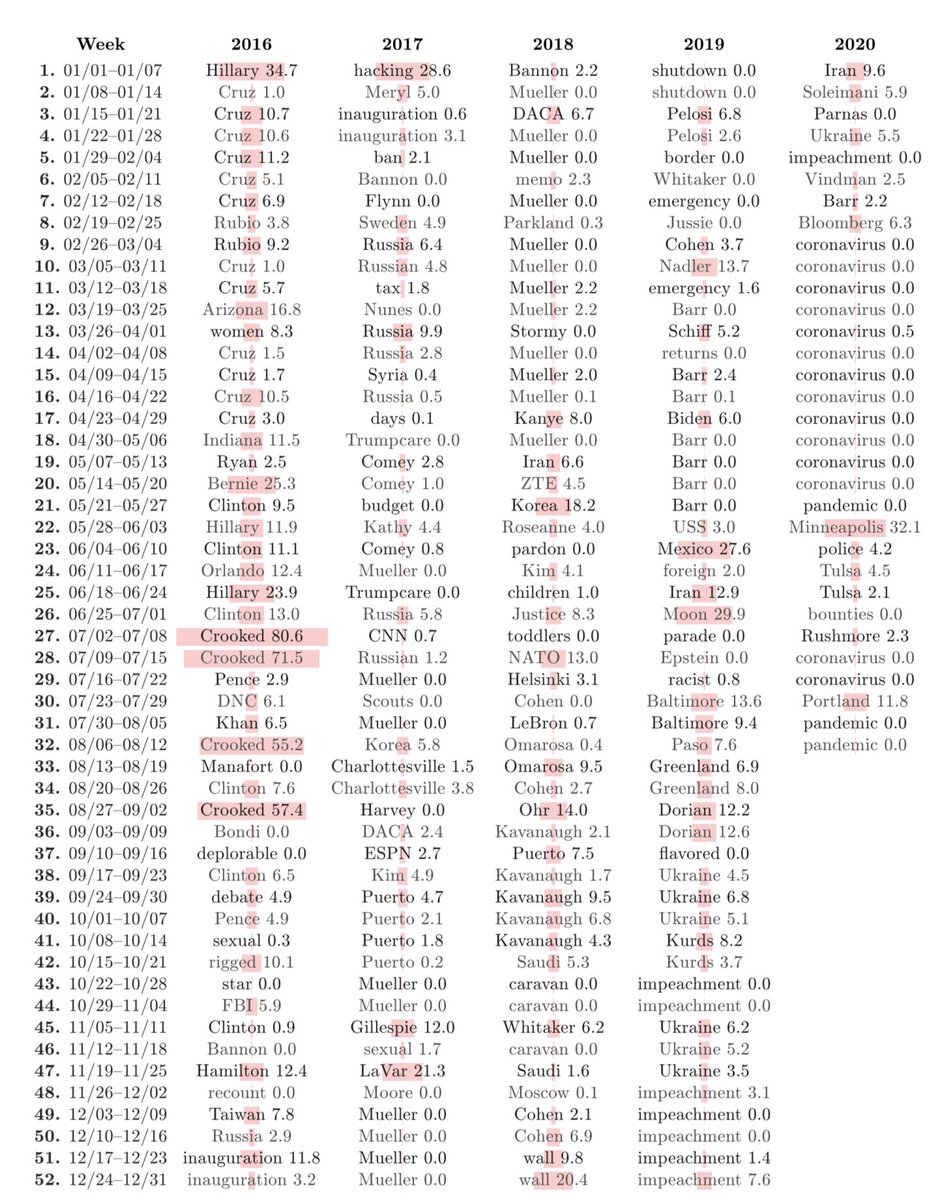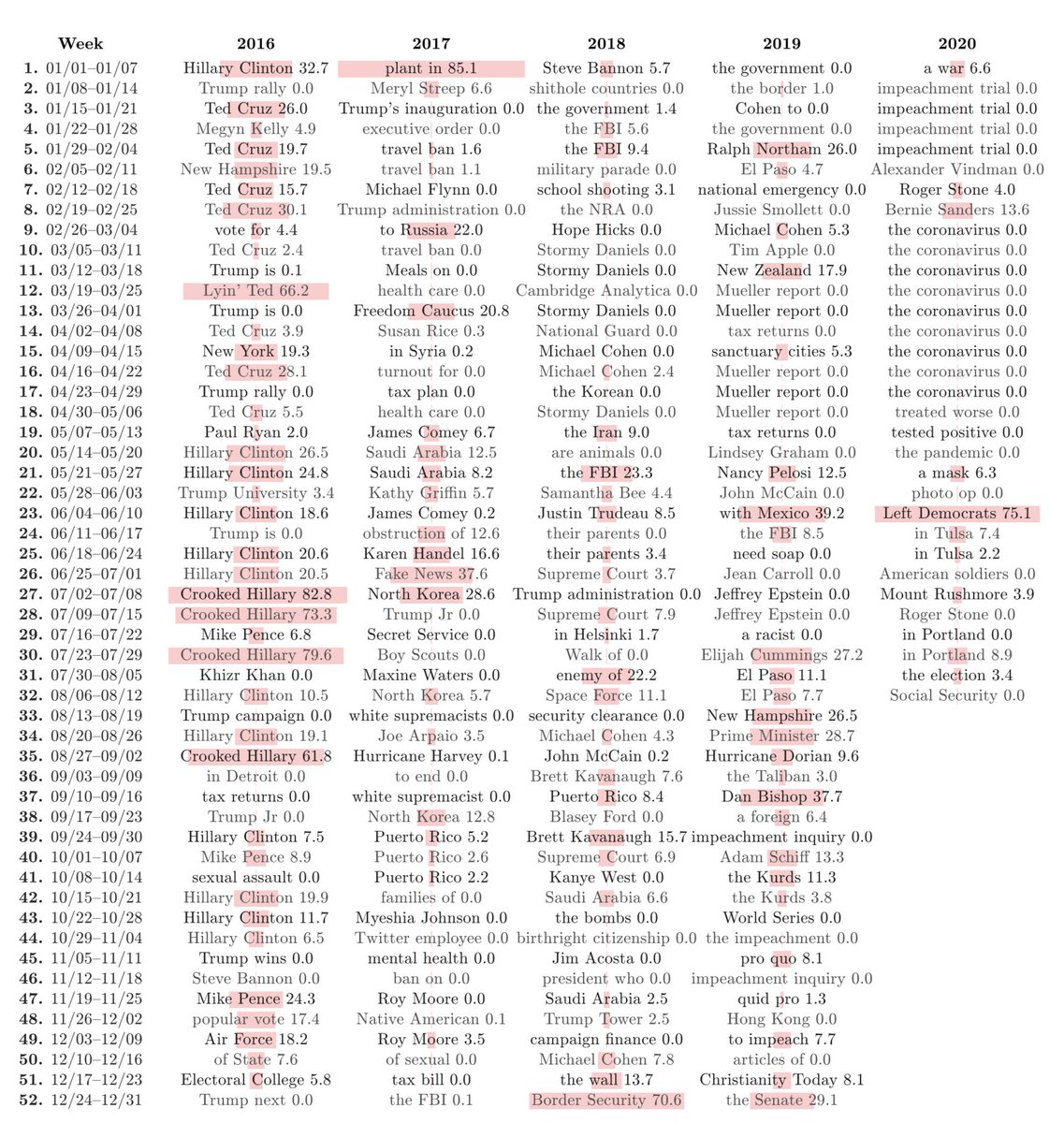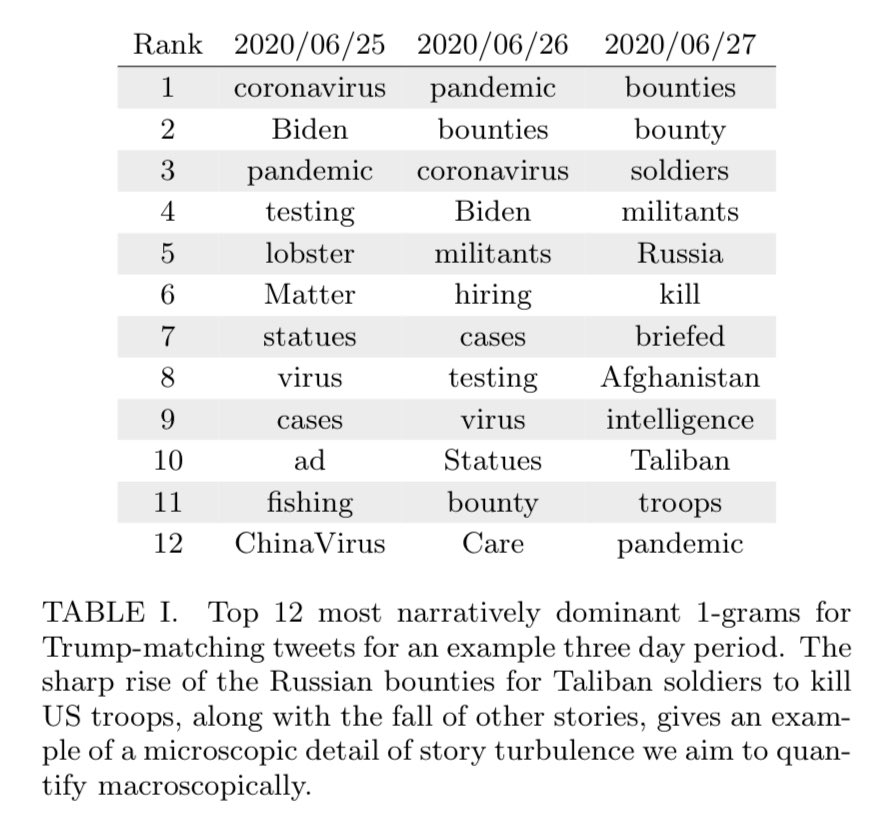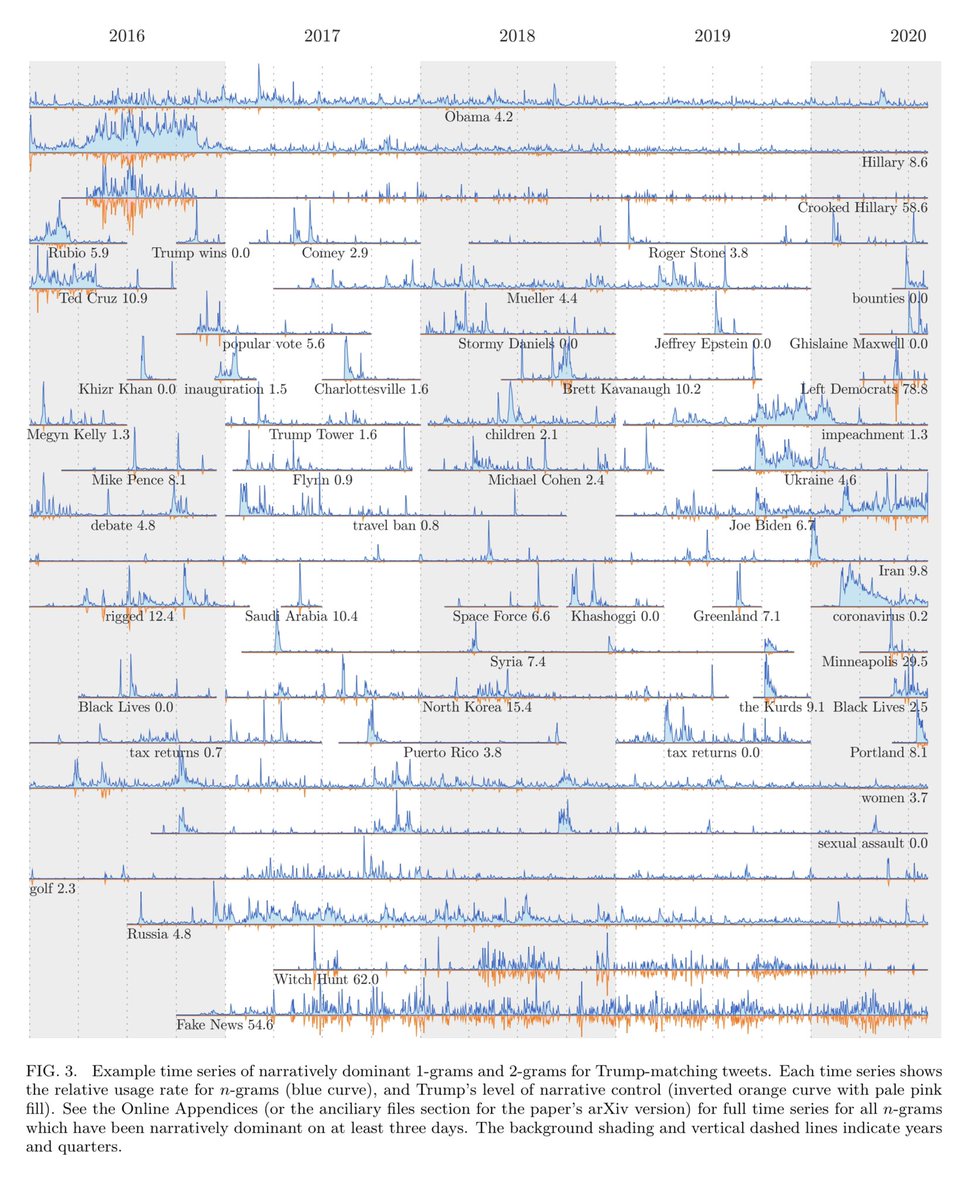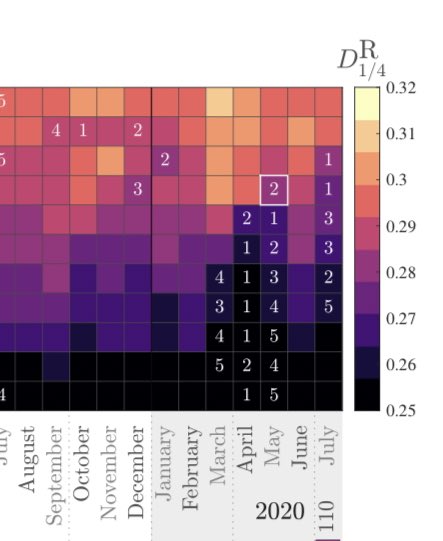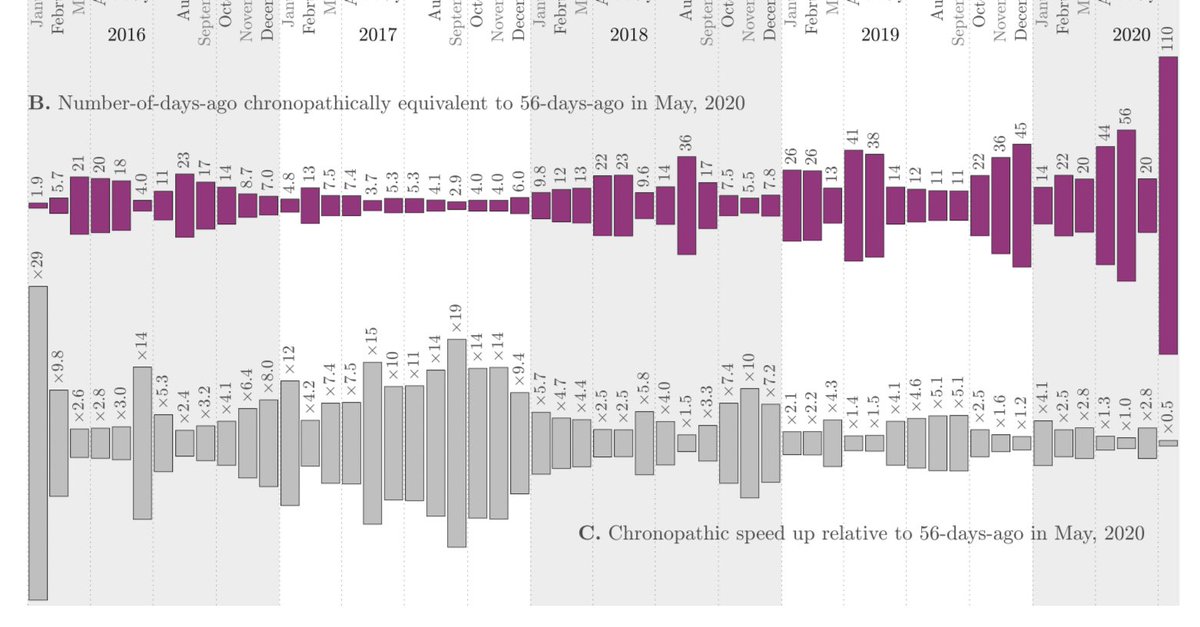“Computational timeline reconstruction of the stories surrounding Trump: Story turbulence, narrative control, and collective chronopathy”
arxiv.org/pdf/2008.07301…
P. S. Dodds, J. R. Minot, M. V. Arnold, T. Alshaabi, J. L. Adams, A. J. Reagan, and C. M. Danforth
What happened in the world over the last two weeks?
What about this time last year? Two years ago?
And what order did the major events happen in?
- North Korea
- Charlottesville
- kneeling in the National Football League
- Confederate statues
- family separation
- Stormy Daniels
- Space Force
- the possible purchase of Greenland
Fast, slow?
Is time flying or dragging?
Were there somehow 1000 days in April 2020?
1. Computationally create a list of words and phrases that represent the major storylines around some anchor.
2. Quantify story turbulence and chronopathy—the rate at which stories appear and how time seems to flow.
But our methods could apply to any high volume topic on any text-rich platform.
“But Twitter is ...”
Yes, we know.
Walk with us.
To what extent are the dominant stories due to Trump?
Let us now operationalize (the right word but what a horrible word).
That gives us 80 billion 1-grams (words, numbers, hashtags, etc.).
In earlier work, we found that Trump is so common on Twitter that it’s tantamount to a function word, like “say”.
Lexical ultrafame:
Function words like “the”, “of” etc. are at the top of these lists.
Then we compare days with each other using rank-turbulence divergence.
Thread here:
The pale pink bars and the numbers next to each n-gram indicate what percentage of an n-gram’s usage is due to retweets of Trump during that week.
- “Crooked Hillary” is largely due to Trump.
- “coronavirus” is rarely explicitly tweeted by Trump.
- They give us a summary of history which we hope will be useful to journalists, historians, and anyone trying to make sense of things.
- They give us confidence to go on to deeper analyses.
2017 had the most story turbulence at all time scales, and September 2017 was the most disconnected from what had happened before.
Comey, Mueller, North Korea, Charlottesville, confederate statues, major hurricanes, ...
Trump regained narrative control in June (‘Minneapolis’, ‘Portland’).
But coronavirus came back, and July seemed more like April than any other three month gap had ever done.
Memory is nonlinear: In July, stories around Trump seemed more like those in April than June.
Groundhog Day but with a pandemic.
Everything is discussed in our paper which, again, is here:
arxiv.org/pdf/2008.07301…
We have an initial site for the paper where you can download some of the data we’ve generated (we plan to add more):
compstorylab.org/trumpstoryturb…

